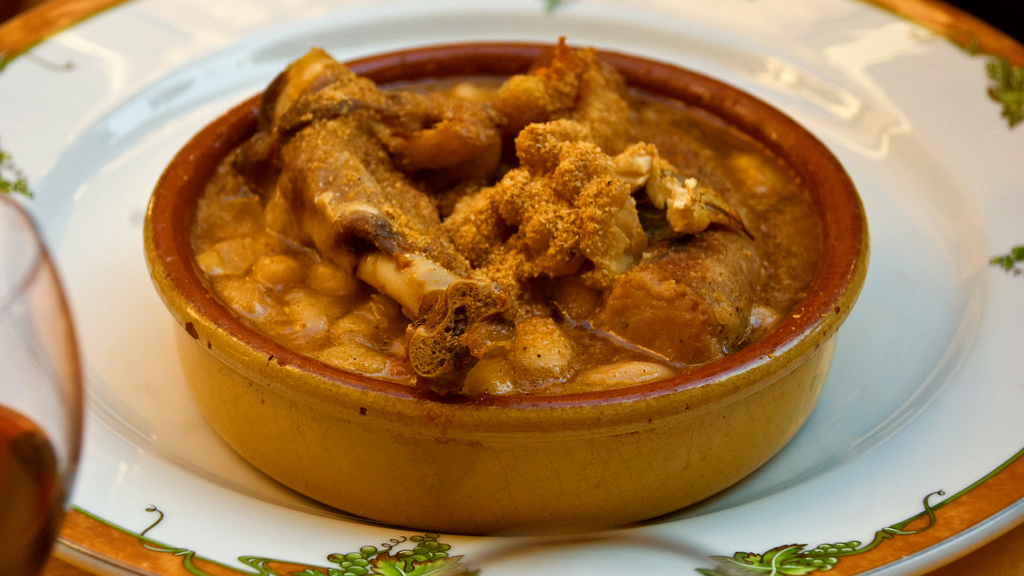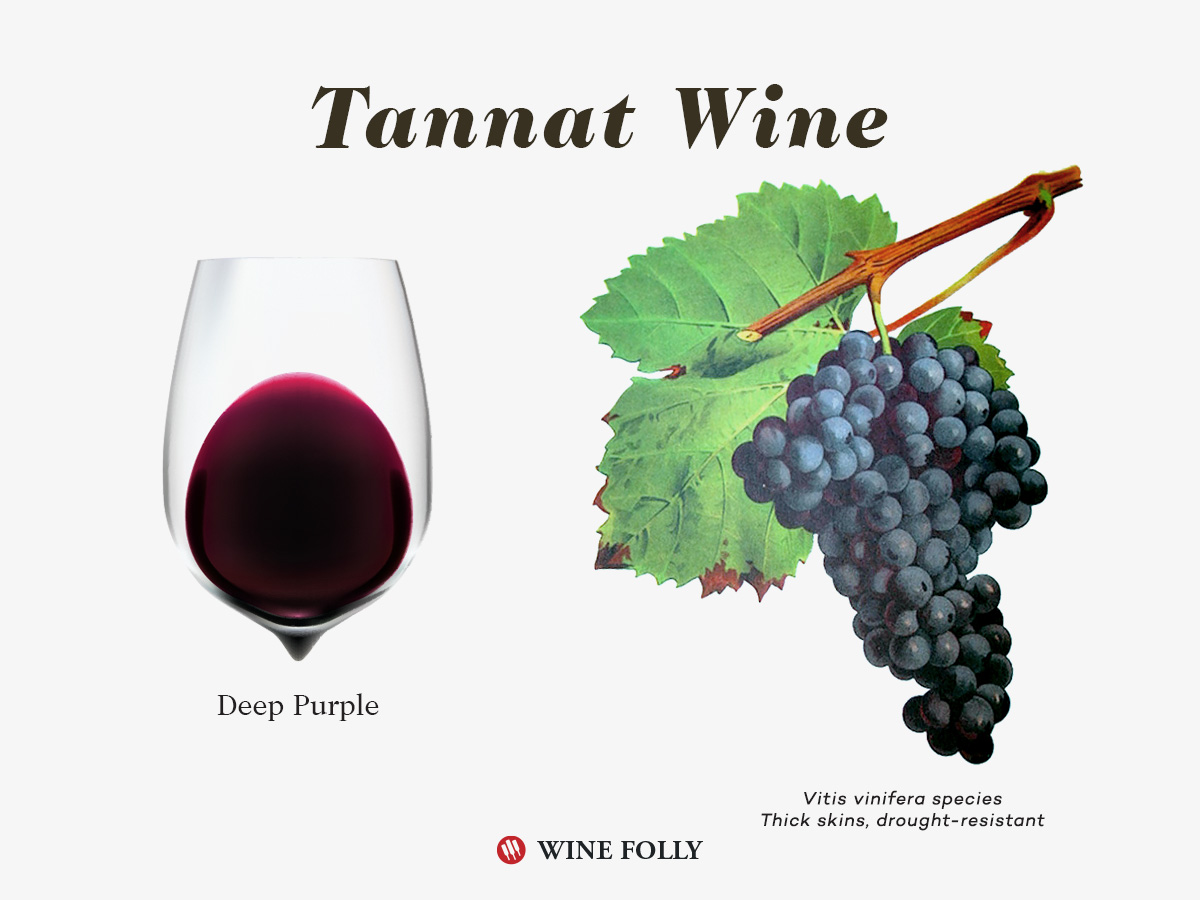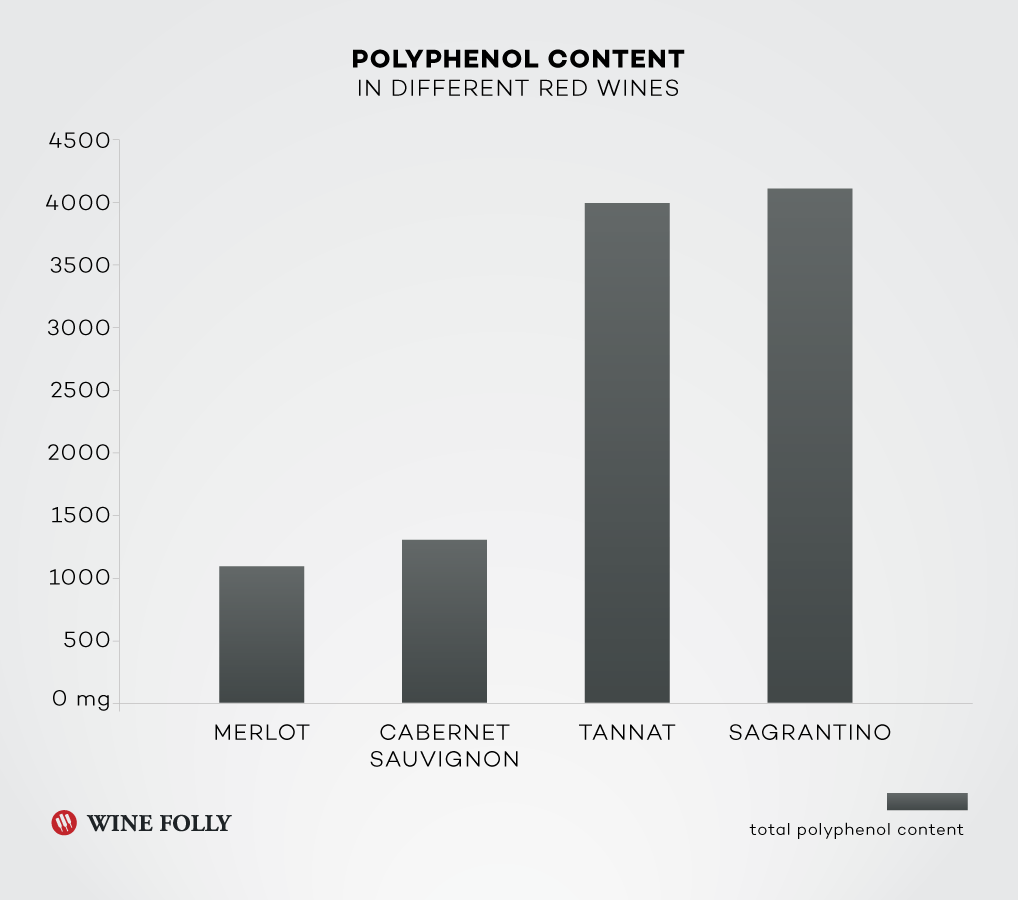Tannat contains some of the highest levels of antioxidants in any wine. This deeply colored red grape originates in France and is increasingly popular in Uruguay.
Also known as: Harriague
Table of Contents
Primary Flavors
- Black Currant
- Plum
- Licorice
- Smoke
- Cardamom
Taste Profile
On the nose, Tannat delivers rich aromas of black currant and red plum, with subtle notes of licorice, smoked meats, and black cardamom. Tannat’s aromas range from ripe and fruity to herbal and savory, depending on the climate where it grows.
Tannat wines typically taste dry on the palate, with a full body, a high level of structured, astringent tannins, and moderately high acidity. These robust traits make Tannat a great choice for aging mid to long term, as wines soften over time.
How to Serve Tannat Wine
Plan to decant Tannat-based wines for at least one hour or use an aerator. Varietal wines perform best in larger “Bordeaux” glasses at temperatures slightly below room temperature.

-
SERVE
60–68°F / 15-20°C
-
GLASS TYPE
Oversized -
DECANT
1 Hour -
CELLAR
10+ Years
Tannat Food Pairing
Because of its high tannin levels, it pairs well with richly marinated, barbecue-grilled meats and vegetables.
Try flame-grilled Porcini mushrooms or medium-rare T-bone steak, heavily seasoned to help soften those massive tannins.

5 Fun Facts About Tannat
- Originally from South-West France, near Madiran, Tannat was brought to Uruguay by Basque immigrants.
- Tannat is the most planted grape variety in Uruguay.
- It’s often aged in oak to help polymerize the tannins, making it taste smoother.
- Tannat has been touted as one of the “healthiest” red wine grapes, thanks to much higher levels of antioxidants (like resveratrol).
- Tannat is also known as Harriague in Uruguay.

Where it Grows
With more than 10,000 acres planted throughout the world, Tannat is a common wine grape. You’ll find it mostly grows in France and Uruguay.
- France: 6,200 acres (2,513 hectares)
- Uruguay: 4,263 acres (1,725 hectares)
- Argentina: 2,068 acres (837 hectares)
- USA: 610 acres (247 hectares)
- South Africa: 282 acres (114 hectares)
- Brazil: 269 acres (109 hectares)
- Others: 162 acres (66 hectares)
Total Vineyard Area – 13,685 acres (5,611 hectares) (Source: University of Adelaide, 2021)
Uruguay
What to expect: Smoother tannins, riper black fruit, delicate violet notes, elegant yet powerful wines.
Tannat from Uruguay is made in a more laid-back style than in its homeland of France. With a focus on making wines that are ready to drink much earlier, these wines don’t necessarily need time in the cellar to be delicious.
Often blended with Syrah, Cabernet Sauvignon, and sometimes even Pinot Noir, Uruguayan Tannat is a great place to start your Tannat journey. Many producers here use less and less oak to preserve the purity of the fruit flavors.
Madiran, France
What to expect: Wines that need time to age, brooding blackberry and plum, grippy tannins, and unmistakable power.
Madiran, a small appellation in southwest France, makes big wines based on Tannat. They have full-throttle tannins and searing acidity. For this reason, it’s often blended with Cabernet Sauvignon or Cabernet Franc to ease astringency. Still, French law requires a minimum of 60% Tannat on wines labeled “Madiran AOC.”
Try setting one down for a decade (if you can wait that long!). Most winemakers age their wines in oak here, so expect subtle spice and smoke notes.

In-Depth Knowledge
If you had seen tasting notes for French and Uruguayan Tannat, you likely noted that the version from Uruguay is described as having smoother tannins and more floral aromas. This difference is partially due to clonal selection.
The original grapevine clones brought from France by Basque immigrants produced wines that were likely very astringent and grippy, just like in Madiran. However, in Uruguay, producers have selected different clones that produce smoother tannin wines with more elegance.
Winemaker’s Secrets to Tannat
Wine writer Stacy Slinkard spoke with winemakers about Tannat, and here’s what she found out.
Winemakers love Tannat because its thick skins make it:
- Relatively easy to grow in a variety of climate conditions (especially dry).
- Less likely to be attacked by vineyard pests, fungus, and mold.
- Less susceptible to cold temperature variations and the dreaded frost.
Of course, it can be tricky to manage in the cellar because it’s such a big wine! The grape showcases extra thick skins and high seed counts (often five seeds per grape instead of the standard 2–3). These attributes contribute to robust polyphenol compounds in the wine.
Looking for Velvety Tannat?
Here’s what to look for in the winemaker’s notes to find smooth, velvety wines:
- Oak barrel aging – while oak introduces wood tannins, it also allows a steady oxygen entrance to the wine, which helps the wine taste smoother.
- Micro-oxygenation (aka “microOX” or microbullage in French) – is the process of introducing very small amounts of oxygen during the winemaking process to soften the overbearing structure and make the wines more approachable at a younger age.
- Extended aging – one of the perks of aging a wine that is built to age (i.e. carries high tannins and high acidity) is that over time, the wine’s tannins will break down and soften on their own.